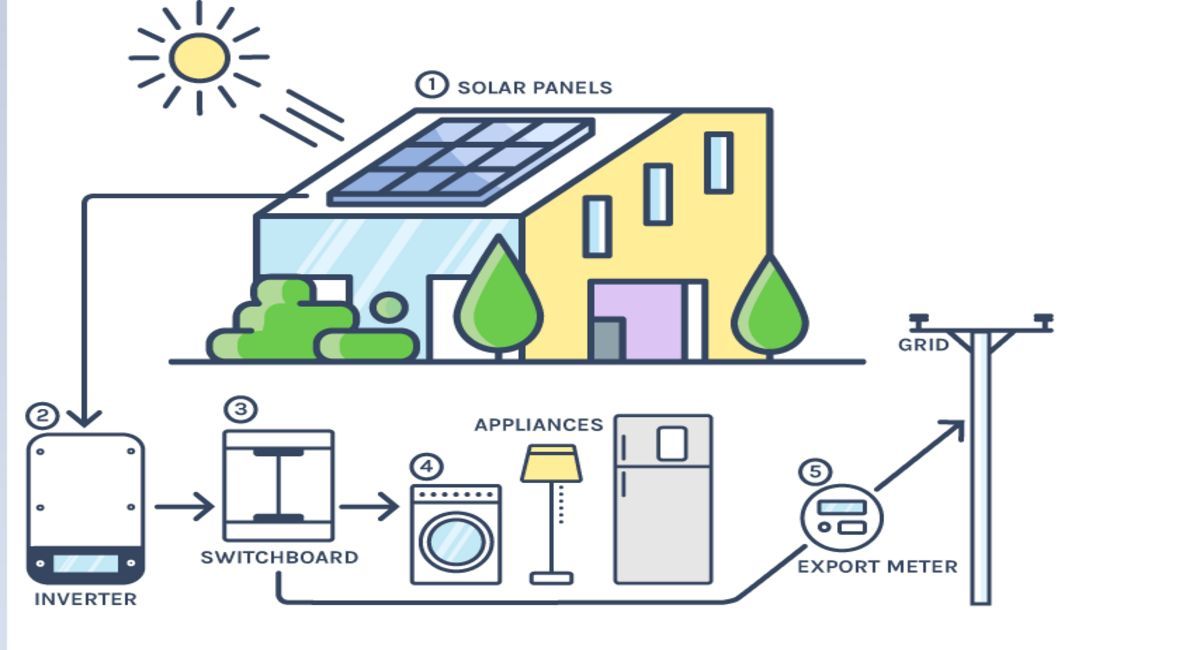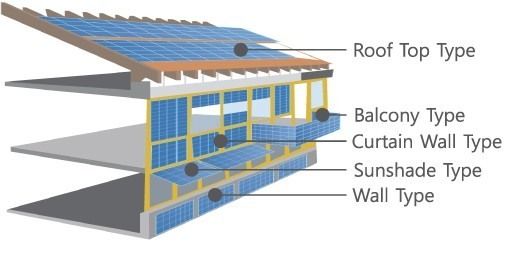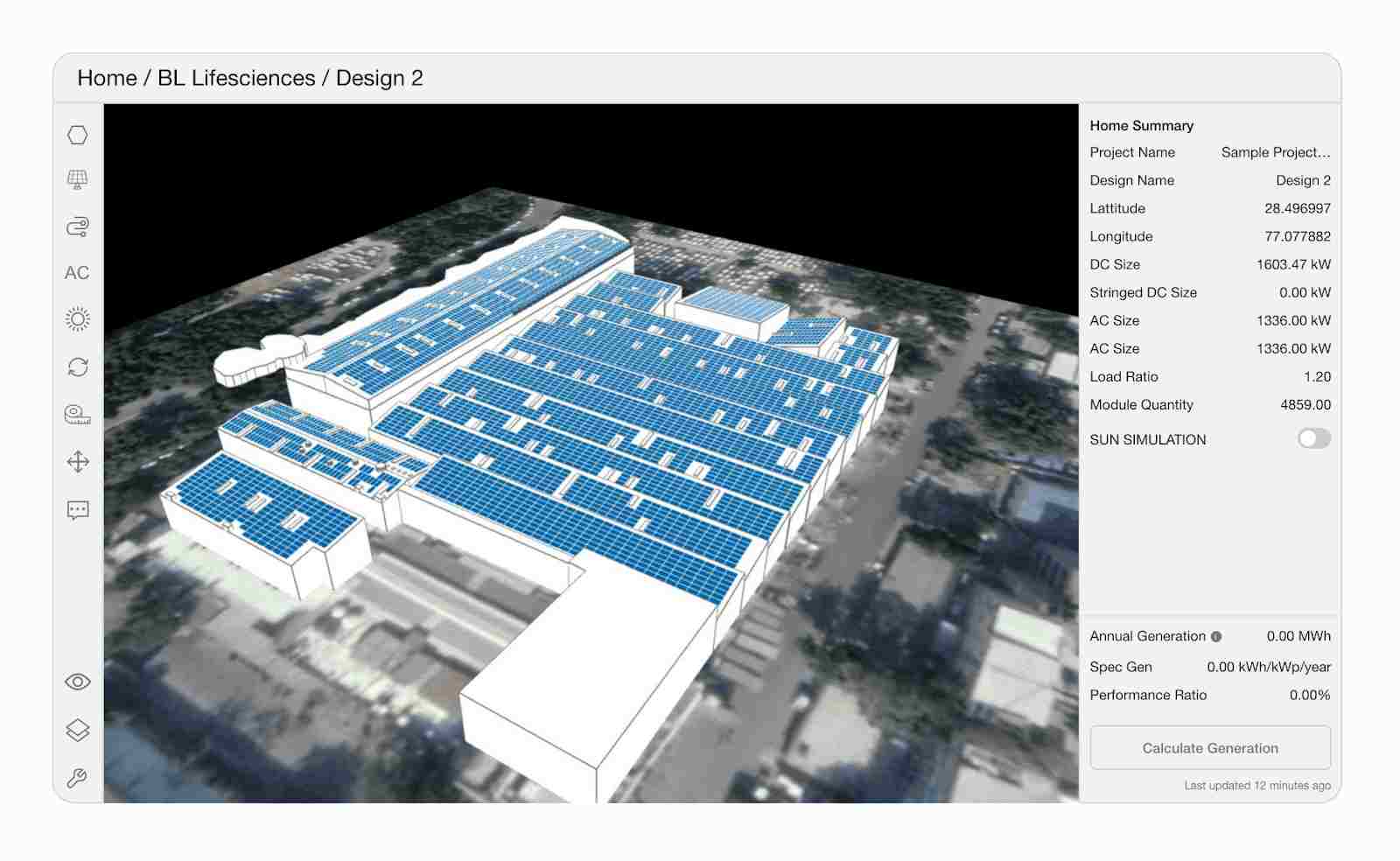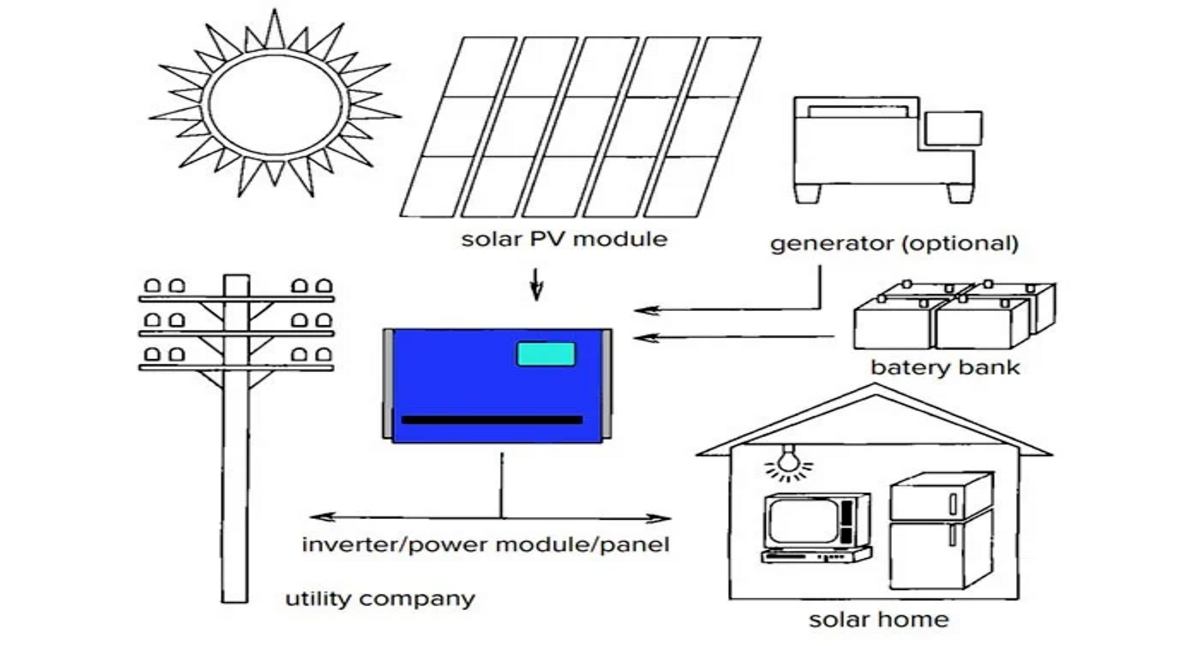What Factors Should Be Considered When Designing A Pv System?

What is a PV System?
A photovoltaic system, often known as a PV system, is an electric power system that uses photovoltaics to generate usable solar electricity. It is made up of a number of components, including solar panels to absorb and convert sunlight into energy, a solar inverter to convert the output from direct to alternating current, and mounting, cabling, and other electrical accessories to complete a functional system. It may also feature an integrated battery and employ sun-tracking technology to optimize overall system performance.
A photovoltaic system turns the light emitted by the sun into useful power. It consists of the solar array and the other system components. Grid-connected vs. stand-alone systems, building-integrated vs rack-mounted systems, residential vs. utility systems, distributed vs. centralized systems, rooftop vs. ground-mounted systems, tracking vs. fixed-tilt systems, and newly constructed vs. retrofitted systems are some of the differences between PV systems. Other comparisons may include microinverter systems versus central inverter systems, crystalline silicon systems versus thin-film technology, and module systems.
PV systems range in size from tiny rooftop-mounted or building-integrated systems with a few to several tens of kilowatts of capacity to big utility-scale power plants with hundreds of megawatts of capacity. Most PV systems are now grid-connected, with off-grid or stand-alone systems accounting for a tiny percentage of the market.
Solar PV System Design Basics:
Solar photovoltaic modules create power, but they are only one of several components in a photovoltaic (PV) system. A number of different technologies must be in place before the power produced may be used in a house or company. Let's take a closer look.
Mounting Structures:
PV arrays need to be mounted on a strong and durable structure that supports the array and can withstand decades of wind, rain, hail, and corrosion. These structures tilt the PV array at a fixed angle determined by the latitude of the area, the orientation of the structure, and the requirements of the electrical load. To achieve the highest annual energy yield, the module is oriented just south of the Northern Hemisphere and tilted at an angle corresponding to the latitude of the region. Rack mounts are currently the most popular method due to their robustness, versatility, and ease of construction and installation. More sophisticated and cheaper methods continue to be developed. In the
In a ground-based PV system, a tracking mechanism automatically moves the module to track the sun across the sky, providing more energy and a higher return on investment. One Axis trackers are usually designed to track the sun from east to west. A 2-axis tracker allows you to keep the module facing the sun all day long. Of course, tracking has a high initial cost, and advanced systems are more expensive and require more maintenance. As the system improves, cost-benefit analysis increasingly supports tracking ground-based systems.
Building-Integrated PV:

While the majority of solar modules are installed in specific mounting systems, they may also be incorporated directly into building components such as roofs, windows, or façades. These are referred to as building-integrated PV systems (BIPV). Integrating solar into buildings might increase material and supply chain efficiency by merging redundant parts, as well as lower system costs by utilizing existing building systems and support structures. BIPV systems might power direct current (DC) applications in buildings such as LED lighting, computers, sensors, and motors, as well as grid-integrated efficient building applications like electric car charging. Although there are still technical and financial challenges to broad usage of BIPV systems, their distinct value makes them a potential alternative to standard mounting structures and construction materials.
Inverters:
Inverters are used to convert direct current (DC) generated by photovoltaic panels to alternating current (AC). Alternating current (AC) is used for local power transmission and most household equipment. PV systems have either an inverter that converts the power generated by all modules into usable electricity, or a microinverter that is connected to individual modules. Single inverters are generally cheap and easy to cool and maintain when needed. Microinverters can be used to operate each panel individually. For example, it is useful, for example, if you can shade some panels. Inverters are expected to need to be replaced at least once during the 25-year life of the PV system.
Advanced inverters, or "Intelligent Inverters," enable two-way communication between the inverter and the utility company. This helps balance supply and demand, either automatically or via remote communication with the network operator. By gaining this insight (and possible control) of supply and demand, utilities can reduce costs, ensure grid stability, and reduce the likelihood of power outages.
Storage:
Batteries enable the storage of solar photovoltaic energy, allowing it to be used to power our houses at night or when weather conditions prevent sunlight from reaching PV panels. Not only may they be utilized in the house, but batteries are also becoming increasingly significant in the utility industry. When consumers send solar energy back into the grid, batteries may store it and return it to customers later. The greater usage of batteries will aid in the modernization and stabilization of our country's electric system.
What Are the Most Important Factors to Consider When Designing a Solar PV System?
Available Roof Area:
The first step is to assess the roof's condition and the available mounting surface. If the building design is available and exact, the roof size may be determined. It is, however, advised that you measure the roof surface yourself.
Not every roof, however, is easily accessible. In this situation, you may use a laser gauge to determine the roof surface, or you can hire a solar contractor to measure the roof. When darkened parts, dormers, windows, and the like are subtracted from the available roof surface, the maximum mounting surface for the solar PV system is obtained.
Orientation:
To calculate the energy production of a photovoltaic system, the solar irradiation in the plane corresponding to the installation and the sun's path at the location at different times of the year are required. The height and azimuth of the sun determine the position of the sun at any given time. The direction and tilt (inclination) of solar panels impact their performance, which influences the quantity of producible energy.
Solar energy is greatest when the plate is perpendicular to the irradiation, depending on the tilt.The angle of departure from the geographical south of a surface, or north in the southern hemisphere, is the orientation of the photovoltaic module. Maximum variations of +/-20 degrees are allowed. The fundamental guideline for solar panel installation in the northern hemisphere is that they must be oriented towards the true south (and in the south, the true north) in order to receive as much direct radiation as possible during the day.
The orientation angle of a solar panel is determined by only one angle: the orientation (or azimuth) of the panel. The solar azimuth is the angle created between the sun's meridian and the place meridian (South in the Northern Hemisphere and North in the Southern Hemisphere). At noon, this angle is zero; in the morning, it is negative; and in the afternoon, it is positive. The azimuth angle (azimuth angle) of departure from the optimal direction to the south (in the northern hemisphere) or to the north (in the southern hemisphere) can be used to determine the orientation of the panels (in the southern hemisphere).
Inclination:
The climatic conditions and geographical location of the PV modules are critical factors in determining the optimal tilt angle for high energy output.
Solar radiation on a surface perpendicular to the direction of solar radiation propagation is always larger than if the identical surface is placed in any other location. Because the inclination takes into consideration the sun's location throughout the year, its ideal position may change over time. As a result, for the installation of permanent modules, an inclination value for the maximum average power received yearly is often specified.
Solar panels must be set at an angle to aim straight towards the sun in order to convert the most light into solar power. Trackers, depending on how the panel is installed, can be set at a fixed angle or change throughout the year to optimize solar energy from the sun.
Software For Designing A Photovoltaic System:

It is clearly evident that many elements influence the optimal design and profitability of a solar PV system, and planning is undoubtedly a hard process. Solar structure design software or solar design software is very useful if you wish to do this more accurately.
Based on the supplied framework parameters, such software determines if the solar PV system can be run in a cost-effective manner using the available options.
Why Are Inverters Required On Modern PV Systems?
Inverters serve as the PV system's brain. They continue to convert DC to AC, but they also allow for monitoring, decision-making, and control operations. Because of its intelligence, it is the component most adapted to fulfill the additional, critical functions required of modern PV systems.

The inverter's duty is broad, and it will expand to serve the smart grid of the future. In addition to managing its own output, it will be requested to offer reactive power assistance to the grid, improving system stability and efficiency. It will also be able to communicate with a utility operator's SCADA system, be managed dynamically and remotely, and offer diagnostic data to assist operations and maintenance workers in diagnosing and correcting system faults.
These "smart" inverters can be combined with energy storage for a more comprehensive solution that aids with grid stabilization. While there are battery-based inverters with grid management capabilities like peak shaving and ramp rate controls, the cost of storage continues to be a barrier to their general implementation. Nonetheless, the grid benefits of energy storage systems, such as lower peak demand and reduced heavy shifting, make finding a cost-effective solution to include this technology critical. Storage technology, like solar, is fast changing, and the industry is expecting to see smaller, more inexpensive, commercially accessible options in the near future.
Conclusion:
The solar PV system is a wonderful way to harness the sun's easily accessible, eco-friendly electricity. Its design and installation are simple and dependable for small, medium-sized, and large-scale energy needs. A system like this makes power available practically anywhere across the world, especially in isolated locations. It liberates the energy user from the utility and other energy sources such as coal, natural gas, and so on.
Such a system will have no negative influence on the environment and will produce energy for a long time after it is installed. The aforementioned systematic design and installation give important suggestions for our current world's requirements for clean and sustainable energy.

